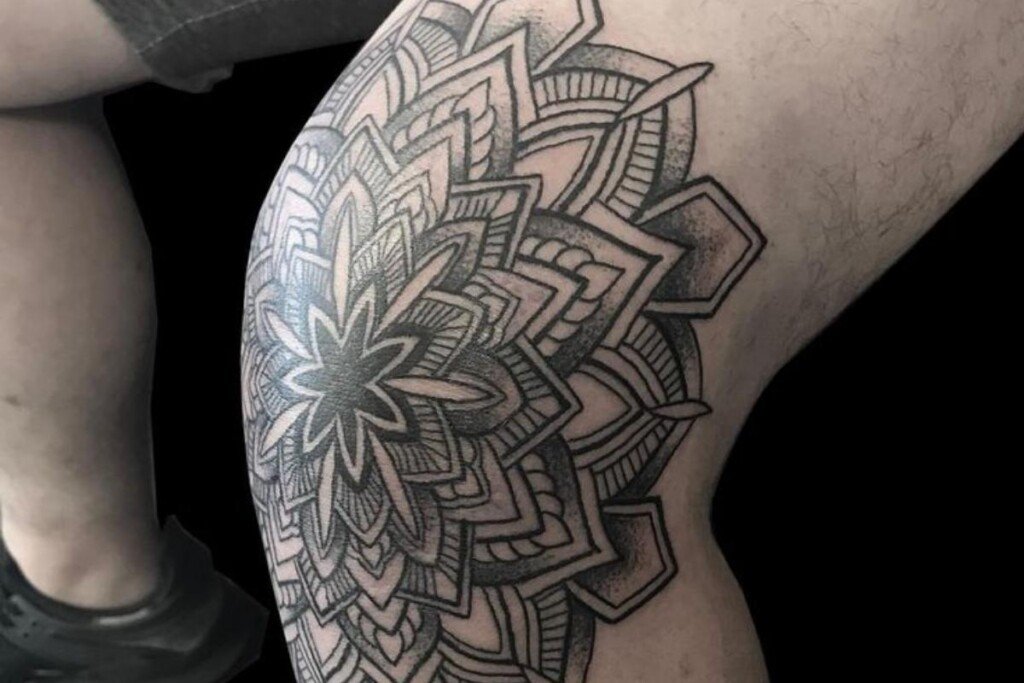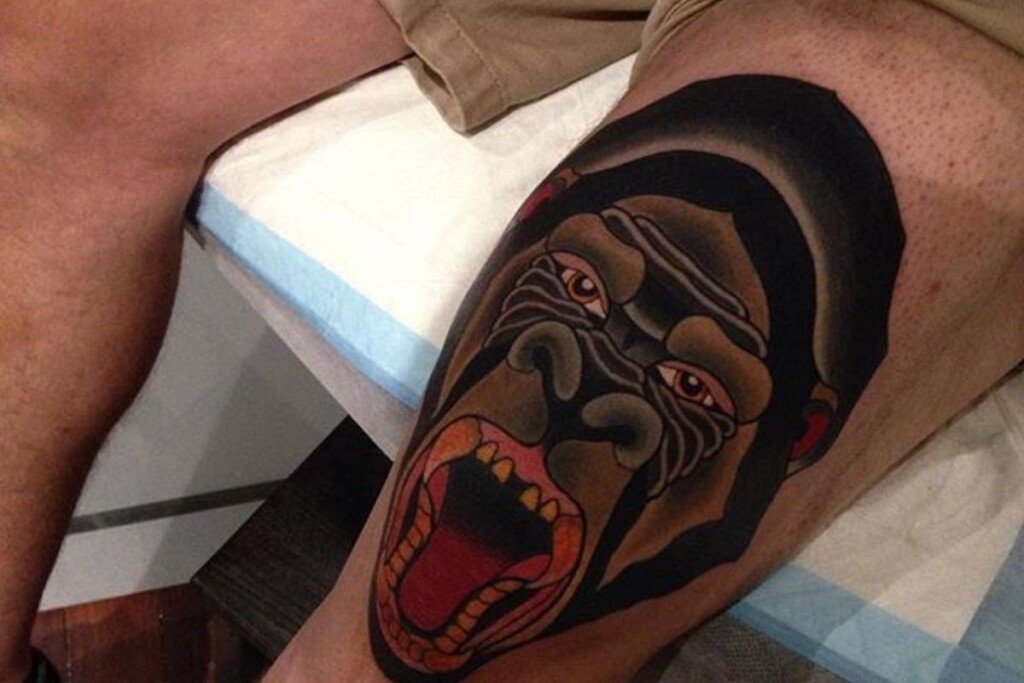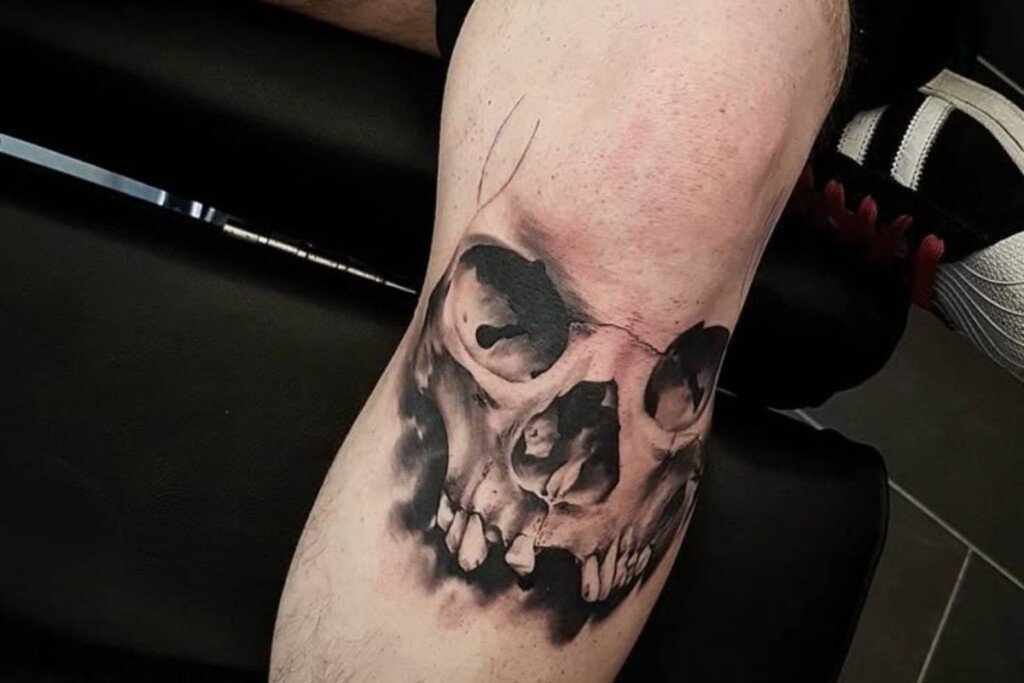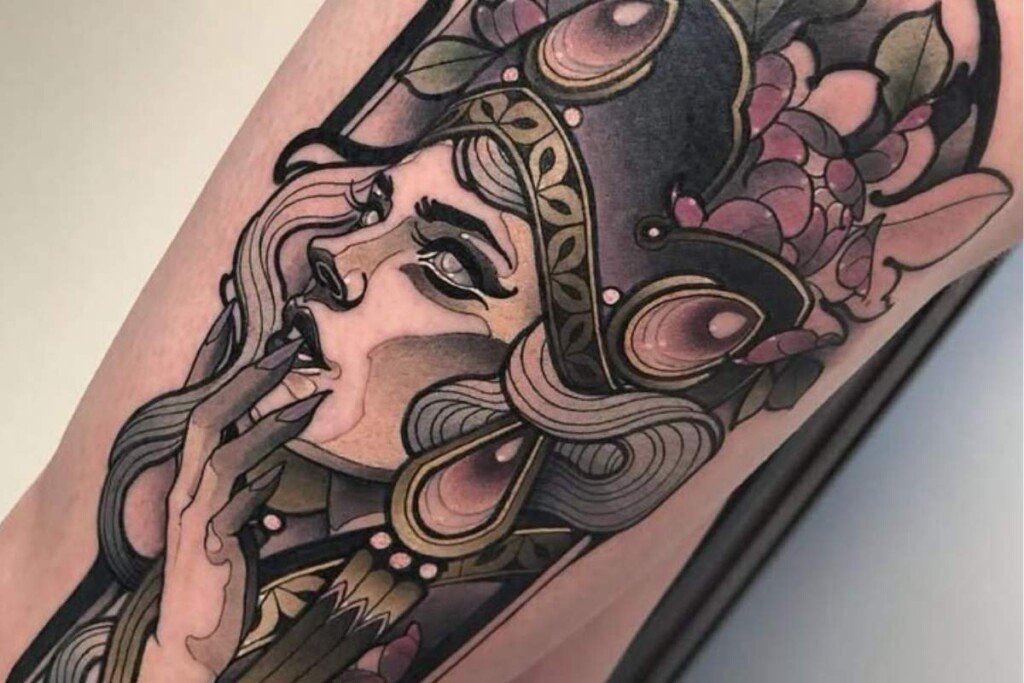Thinking about getting a knee tattoo? Let me tell you, it’s not just any tattoo—it’s a bold decision that takes courage and patience. Knee tattoos are not for everyone, but if you’re ready, they can be some of the most eye-catching and unique pieces of body art.
I sat in the tattoo chair and felt the needle go over my kneecap. It’s not easy! The pain is real, but the result is worth it. If you’re considering this spot, you should know what to expect. From pain levels to design choices and aftercare, let’s go over everything you need to know before getting a knee tattoo.
Why Knee Tattoos Are Gaining Popularity
Tattoos have long been a means of Fashion, and in recent years, knee tattoos have surged in popularity. As one of the more unconventional tattoo placements, the knee presents both a challenge and an opportunity for unique body art. The curved surface and constant movement make this area a test of endurance, but the final result can be a stunning and bold statement.
How Painful Is a Knee Tattoo?
Pain is one of the first concerns when considering a knee tattoo. Due to the thin skin, abundance of nerve endings, and proximity to the bone, the knee is one of the more painful places to get inked. Many compare the sensation to a combination of sharp needlework and deep pressure, making it a choice for those who can handle discomfort.
Pain Level Comparison Table
| Body Area | Pain Level (1-10 | Reason |
| Forearm | 3 | Thick skin, fewer nerve endings |
| Thigh | 4 | More flesh, less sensitivity |
| Knee | 8-10 | Thin skin, near bone, high nerve sensitivity |
| Elbow | 9 | Similar structure to the knee |
| Ribcage | 10 | Thin skin, close to bone |
How To Choosing the Right Design for a Knee Tattoo
Picking the right design is crucial for a knee tattoo. Given the curvature and movement of the knee, designs need to complement the natural anatomy and adapt well to bending. Here are some common themes and styles that work well:
Mandala and Geometric Designs
Mandalas and geometric tattoos are a popular choice because they naturally fit the circular shape of the knee cap. The symmetry allows for stunning, visually appealing designs that remain eye-catching even when the knee moves.

Animal and Nature-Inspired Tattoos

Animal designs, such as a roaring lion or an owl, create a powerful and detailed look. Nature elements like flowers or leaves can wrap around the knee cap seamlessly, making the tattoo flow with the leg’s shape.
Skulls and Dark Aesthetic Themes

For those who prefer an edgier look, skulls, gothic patterns, or biomechanical designs provide an intense, high-impact effect. These designs work well with shading techniques, which enhance the three-dimensional appearance of the knee area.
Traditional and Neo Traditional Art

Bold lines and vibrant colors make traditional tattoos a great option for knee placement. Whether it’s a dagger, rose, or sailor-inspired imagery, these designs stand out with their classic aesthetic.
The Tattooing Process: What to Expect
Getting a tattoo can be exciting, but if it’s your first time, you may wonder how it works. Here’s a simple step by step guide on what happens during a tattoo session.
Preparation
Before the session, make sure your skin is well-hydrated and exfoliated. Avoid alcohol and caffeine 24 hours before your appointment, as these can thin your blood and increase bleeding.
The Inking Process
Tattoo artists typically outline the design first and then fill in shading and details. Because the knee has a lot of motion, it may take longer than expected to complete. Some artists may ask you to straighten or bend your leg at different angles for optimal inking. If you’re looking for elegant and floral-inspired ink, check out our guide on Corsage style tattoos to explore beautiful designs and placement ideas
Healing and Aftercare
Healing a knee tattoo can be more challenging than other placements due to constant movement. Follow these aftercare tips to ensure proper healing:
- Keep It Clean – Wash with antibacterial soap and pat dry.
- Apply Ointment – Use a thin layer of tattoo-friendly balm.
- Avoid Excessive Bending – Too much movement can cause the skin to crack.
- Wear Loose Clothing – Tight fabrics can rub against the tattoo and slow healing.
- Stay Out of Water – No swimming or soaking in water for at least two weeks.
How Long Does a Knee Tattoo Take to Heal?
Healing varies from person to person, but generally, knee tattoos take about 2-4 weeks for the outer layer to heal and up to 3 months for complete internal healing. Scabbing is common, and due to the location, you may experience more flaking than other areas.
| Healing Stage | Timeline | What to Expect |
| Initial Healing | 3-7 Days | Redness, swelling, and tenderness |
| Scabbing Phase | 1-2 Weeks | Peeling and light scabbing |
| Deep Healing | 3-8 Weeks | Skin regenerates, minor itching |
| Fully Healed | 2-3 Months | Tattoo settles, colors brighten |
Pros and Cons of Knee Tattoos
Knee tattoos are a bold choice, blending artistry with personal meaning, but they demand careful consideration of pain tolerance, aftercare commitment, and long-term aesthetics.
Pros
- Unique and eye-catching placement
- Works well with various tattoo styles
- Can be part of a larger leg piece
Cons
- High pain level during the session
- Longer healing time compared to other areas
- Potential fading due to knee movement
Who Should (and Shouldn’t) Get a Knee Tattoo?
Here’s a quick guide to help you decide if a knee tattoo is right for you.
Ideal Candidates
- Those who have previous tattoo experience and understand pain tolerance.
- People looking for a bold and unique placement.
- Individuals willing to commit to long-term care and possible touch-ups.
Who Should Avoid It?
- First-time tattoo clients who are uncertain about pain tolerance.
- Those with mobility issues or sensitive knees.
- People who have frequent exposure to the sun and wear tight clothing daily.

Hi, I’m Aashley Kai! I graduated with a degree in Cosmetology and am certified in Dermatological Skincare. With over 20 years of experience, I have worked with top beauty brands and dermatologists to help people achieve healthy, glowing skin. I believe in preventative care and creating personalized beauty routines that bring out natural beauty. I also write beauty content for leading magazines and share expert skincare advice. My goal is to help people feel confident and beautiful in their own skin.


